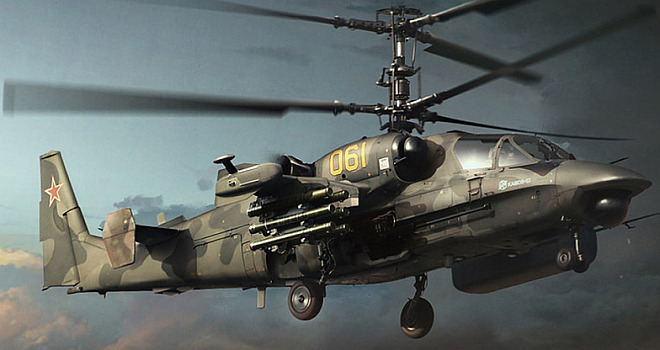
Posted on 07/21/2016 11:49:58 PM PDT by sukhoi-30mki
The Russian aircraft carrier Admiral Kuznetsov is getting ready for a voyage to the Syrian coast in the Mediterranean. The goal of the deployment is to check the combat capabilities of the ship and its strike group, including Russia's state-of-the-art KA-52K Katran helicopters.
The cruiser's deck-based aircraft will join the Syrian campaign from October 2016 to January 2017.
The air group's tasks
The deployment of the Admiral Kuznetsov amounts to a planned inspection of Russian arms, Viktor Murakhovsky, editor-in-chief of the Arsenal Otechestva (Arsenal of the Fatherland) magazine, told RBTH.
"Sending the Admiral to Syria is a test of the operational and technical capacity and ability of our air carrier strike group, since previously Russia has never used air carriers in real combat conditions," said Murakhovsky.
Currently, the vessel carries 15 Su-33 and MiG-29K/KUB fighter jets, as well as more than 10 Ka-52K, Ka-27 and Ka-31 helicopters.
The main task of the air group will be to ensure the Russian Aerospace Forces' air defense and support the government troops in battles with militants opposed to Syrian leader Bashar al-Assad.
“The air group's capacity to strike ground targets is limited," said Murakhovsky. "A new turning point in the war with militants should not be expected. The main role in the war against terrorists is being played by Assad's troops."
Murakhovsky denied reports by some Russian media that the cruiser will be involved in combat earlier than planned in response to the killing of Russian pilots near the city of Palmyra.
Testing in action
During the deployment of the Admiral Kuznetsov, Russia's state-of-the-art Ka-52K Katran helicopters – the ship-based version of the Ka-52, which is already being used in the Syrian operation – will be live-fire tested.
The land-based version of the combat machine was first used during the Russian air campaign in Syria. The first images of the combat use of the helicopter hit the internet on April 3, when the government army completely liberated the city of Al-Qaryatayn in Homs province with the support of the Russian air force.
According to Murakhovsky, the combat capabilities of the ship-based version of the Ka-52 is in no way inferior to the land-based one.
"The machines will have to also manifest themselves in the support of land forces," he said. "The main difference between the helicopters are operational. The Katran has folding blades, so that it can fit in a helicopter carrier's hangar, while the navigation system has been slightly upgraded to ensure flights over the sea, boarding and landing on the ship."
The Katrans were created specifically for the Mistral-class amphibious assault ships commissioned by Russia from France as early as 2011. But because of Russia’s role in the Ukrainian crisis, the helicopter carriers failed to join the Russian Navy: French President François Hollande terminated the contract for the supply of the Mistrals.
According to Vadim Kozyulin, a professor at the Academy of Military Sciences, France canceled the contract under pressure from its NATO allies.
As a result, the ships were acquired instead by Egypt, and immediately after that Cairo bought a batch of 50 Russian Katrans from Moscow.
According to Dmitry Safonov, military analyst for daily newspaper Izvestiya, the use of Katrans in Syria will be a step toward promoting the machine in the global arms market.
"In particular, this is being done to demonstrate the combat capabilities of the machine to Egypt," said Safronov.

Ship Based Helicopters have come a long way, since 1948. Helicopter Squardon One was commissioned as the first operational Navy helicopter squadron. My father was an OIC in HU-1, Unit 1 in 1953 aboard the USS Princeton (CV-37) during the Korean War. It was his second war. In WWII he was a fighter pilot. Between wars, he learned to fly helicopters in the reserves and was reactivated for Korea.
Helicopter Squardon One was commissioned as the first operational Navy helicopter squardon.
http://www.hu1.vacau.com/pages/history.htm
The Soviet Union was a little behind the USA...it was about 12 years later they had ship based helicopters or even aircraft carriers of any kind and then it was for anti-sub warfare.
They were Moscow and Leningrad and designed to hunt Polaris boomers in the eastern Med. This was before SLBMs had the ranges they have today.
I was on boomers when I was in the Navy, Benjamin Franklin class, but with Poseidon C3 missiles backfitted to C4’s later on.
C4 were classified Trident though.
Disclaimer: Opinions posted on Free Republic are those of the individual posters and do not necessarily represent the opinion of Free Republic or its management. All materials posted herein are protected by copyright law and the exemption for fair use of copyrighted works.